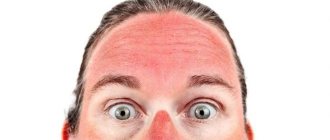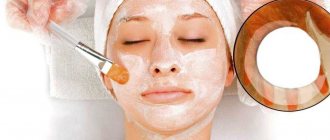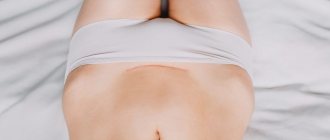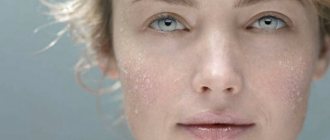Hair on the chin, mustache above the upper lip, thick eyebrows are a problem for many women. Waxing will effectively solve this issue. The procedure can be carried out in a beauty salon or at home. Waxing has minimal side effects. Its correct implementation minimizes the risk of injury and possible negative consequences. But even professional removal can lead to irritation, inflammation and ingrown hair. You can solve the problem and reduce unpleasant consequences to zero if you properly care for your skin before and after removing unwanted hair. A large assortment allows you to select any type of product.
Skin care after waxing
Removing unwanted hair is done with the aim of having smooth and beautiful skin. Achieving a well-groomed appearance is quite simple - you should properly carry out the preparation, the procedure itself and care after the session. Neglect will lead to irritation and deterioration of the overall condition of the skin. Delicate areas are especially affected. After waxing, he should receive the necessary care to reduce side effects and prepare for new sessions. The first step is to carefully remove any remaining working material. This can be done with a damp disinfectant wipe. After 2-3 hours, you should take a warm shower without using cosmetics or hard washcloths.
How to soothe the skin, what to treat it with
After the session, irritation may occur. This is a completely natural reaction in 90% of women with thin, fair and sensitive skin. The reaction to mechanical stress disappears within 2-3 hours. In order not to wait for irritation to appear and not to aggravate the situation, the skin should be restored immediately. To do this, it is worth treating it with hydrogen peroxide. The product should not be rubbed in, but only applied with light movements. Experts do not recommend touching the skin after waxing. Therefore, it is better to choose a spray product without alcohol. You can use a small spray bottle. Add a small amount of warm water and a few drops of tea tree and/or chamomile essential oil. Some recommend using olive or refined sunflower oil. They lubricate the treated area. In addition, do not forget about pharmaceutical antiseptics:
- Miramistin;
- Chlorhexidine;
- talc or baby powder.
To prevent irritation, you should decide in advance what to use after waxing and purchase this product.
Folk remedies
To relieve reactions in the form of irritation, folk remedies are used. Essential oils, along with extracts of medicinal herbs and plants, easily cope with this problem. In addition, they help care for the skin. Immediately after the procedure, you can apply a soothing mask to the area to be depilated. Step-by-step recipe for its preparation:
- 10 ml (about 2 tsp) avocado oil mixed with 1 tsp. blue cosmetic clay.
- Add 1 tsp. cocoa and 1 tsp. olive oil.
- Mix until smooth and apply for 20-25 minutes.
It is also effective to use herbal decoctions and juice of medicinal plants. Chamomile, sage, mint and oak bark are considered powerful anti-inflammatory agents. Their decoctions can be used separately from each other, or they can be combined. By adding 3-5 drops of any essential oil to the product, you get a lotion after waxing. It should be used 3-4 times a day. It is worth separately noting the beneficial properties of Kalanchoe and aloe leaves. They moisturize well and neutralize the symptoms of irritation. They are applied as a mask and left for 40 minutes. The juice of these plants can be wiped over the treated area 4-5 times a day.
Medical
For severe irritation, medications should be used. They quickly relieve inflammation, prevent infection of the injured area, improve metabolism in tissue cells and blood supply. The following remedies are recommended:
- for rapid regeneration of damaged skin, relieving dryness - Panthenol, Pantestin, Bepanten;
- to speed up metabolism - antihypoxic agent Actovegin;
- to relieve inflammation and prevent infections - zinc ointment;
- against purulent inflammation of the follicle - Miramistin, Dalatsin, Erythromycin;
- for quick relief of inflammation irritations - salicylic acid, Chlorhexidine;
- to prevent the appearance of ulcers at the site of ingrown hairs - Tretinoin.
All these drugs cannot be prescribed to yourself. This should be done by a specialist.
Cosmetic
Cosmetics can relieve irritation after depilation, slow down hair growth and prevent the problem of ingrown hairs. In addition, they effectively care for the skin and improve its overall condition. You can use gels, creams, lotions that are specially produced for post-depilation care. Cosmetics include:
- lotions of the brands Arabia, Depilflex, Gloria;
- Floresan cream, Follivit cream-gel, coconut oil;
- Librederm scrubs, Lemon-sugar sorbet.
The cost of coconut oil starts from 100 rubles
Hair growth inhibitors
Cosmetics containing ant oil will help slow down hair growth. They improve the condition, relieve irritation and redness. Regular use of them prevents ingrowth. List of recommended products to slow down hair growth:
- post-depilation cream and lotion from Velvet;
- cream for flaking, redness and itching, prolonging smoothness for 10-14 days Floresan;
- Depil Mousse Depileve mousse, which has an anti-inflammatory effect.
Anti-ingrowing
Ingrown hairs cause irritation, inflammation and spoil the appearance. The problem can arise when depilating by any method after a salon procedure or a session at home. If you ignore the problem, it can lead to purulent inflammatory processes. The choice of product depends on the condition of the skin and the degree of ingrowth. You can remove it manually or with chemical peeling. Experts call Follivit cream the best option for ingrown hairs. It not only relieves irritation and its symptoms, slows down growth, but also prevents hair cutting. Popular solutions to the problem:
- Ingrow go Skin Doktors - lotion relieves signs of inflammation and irritation, fights ingrown problems.
- Let`s Epil Gloria – spray lotion prevents ingrown hairs, softens and moisturizes.
- Hair Puller Depilflax. A product based on salicylic acid has a gentle effect on epithelial cells. Reduces the risk of ingrowth, relieves inflammation, evens out the structure.
Price – about 350 rubles
Scrubbing
Ingrown hairs after waxing can be prevented by scrubbing. Before waxing, you should use the scrub 1-2 days before. This will help remove the keratinized layer of epithelium, lift hairs, open and clean pores. After the wax procedure, taking a hot bath, shower or visiting a sauna is not recommended. This can be done only after 2-3 days. The same goes for scrubbing. Immediately after waxing, you can injure the skin with this product, since the top layer has already been subjected to mechanical stress. Recommended body scrubs after hair removal:
- “Brazilian coffee” from Organic Shop based on organic oil. The product cleanses and moisturizes.
- “Lemon-sugar sorbet” from Compliment with citrus aroma. The product perfectly exfoliates and moisturizes.
You can use a scrub you prepare yourself. Grind oatmeal and combine with natural ground coffee. Dilute with shower gel until smooth. Use 3-4 times a week.
Advantages and disadvantages
An epilator is a small device that fits comfortably in your hand. It has special roller attachments that, passing over the skin, capture hairs and pull them out with bulbs. This total removal of unwanted vegetation ensures the high efficiency of the procedure.
Hair removal with an epilator has many advantages:
- The result lasts up to 2-2.5 weeks. Hair begins to gradually appear just a couple of weeks after hair removal;
- Cumulative effect. With prolonged use of the epilator, the hairs begin to grow more slowly, become lighter and softer, which is why they are not so noticeable when growing back;
- Saving. The epilator replaces the constant purchase of machines or consumables for other methods of removing unwanted hair (waxing, sugaring, etc.);
- Wide range of models. In addition to choosing attachments, you can choose a device with a cooling effect or backlight. The sizes of the epilator also vary.
Also, epilating your legs with an epilator is quite clean. If working with wax and sugar paste can leave sticky residue in the bathroom, the epilator wins in this regard.
However, before using the epilator for the first time, pay attention to the disadvantages of the procedure:
- Soreness. The sensation of removing hair using this method can be compared to a large number of sharp tweezers that simultaneously grab and pull out unwanted hairs. Especially with a low pain threshold, it will be difficult for a girl to endure the first procedures;
- Duration of work. Unlike shaving, hair removal using an epilator takes up to 40-60 minutes;
- Epilator price. A good device is quite expensive, but with long-term use the price pays off. Another question is whether this technique is suitable for you, and will you use it?
What not to do
Before and after waxing, you should follow simple care rules. This will enhance the effectiveness of the procedure, slow down the growth of new hair and prevent the risk of possible side effects. After the end of the session, for the first 2-3 days, it is recommended to treat with Chlorgesidine. Cosmetologists recommend that after waxing you avoid sunbathing, visiting a solarium, sauna, bathhouse, or swimming pool.
Is it possible to sunbathe
To prevent injury during waxing, you should not take “sunbathing” before and after the procedure for a week. Tanning can cause irritation, which can lead to pigmentation. Recovery usually takes 5-8 days. However, even after this period, you should use sunscreen SPF 30, since ultraviolet rays have an aggressive effect on sensitive areas treated with wax. This must be done within 1.5-2 months. The best cream, according to experts, is one containing zinc oxide and titanium dioxide.
To take a bath
It is possible and necessary to arrange water procedures after waxing. It is better to use a warm shower so that the water drains from the body. The bath can be used after 2 days, but not hot and without cosmetics. Failure to comply with hygiene rules may lead to the development of pathogenic bacteria that cause infections. You should not use washcloths for washing for about a week. Rubbing, even lightly, can cause ingrown hairs in the treated areas.
Go to the sauna
Visiting a sauna after waxing, where hot temperatures are used, can negatively affect the skin. After mechanical impact, it becomes more sensitive to high temperatures. This leads to burns. You should avoid the sauna for 15-20 days.
Visit the pool
After hair removal with wax, the skin becomes sensitive, especially if the procedure was performed on the face or bikini area. Therefore, interaction with salty or chlorinated water leads to irritation. Additionally, tight swimsuits and swimming suits increase the risk of ingrown skin.
Complications of various types of hair removal
| shaving | wax | threads | sugaring | electro | photo | A.F.T. | laser | |
| irritation | ++++ | +++ | ++++ | ++ | ++++ | — | — | — |
| crusts | ++ | ++ | ++ | + | ++++ | ++ | + | — |
| ingrown hairs | ++++ | +++ | +++ | — | — | — | — | — |
| scars | — | + | + | + | +++ | + | — | — |
| burns | — | +++ | — | + | — | ++ | + | — |
| hypo- and hyperpigmentation | — | ++ | — | +++ | ++ | + | + | — |
| edema | — | + | + | — | +++ | + | + | — |
| frequency of procedures | 1 Week | 2 weeks | 2 weeks | 2 weeks | Once every 4-5 years* | Once a year* | Once a year* | Once a year* |
* - supporting procedures necessary after completing a one-time course
Author of the material: Dermatologist, cosmetologist N.M. Lachinova. All rights reserved.
Possible consequences
Depilation with a wax mixture has its advantages and disadvantages. Negative consequences can be minimized if properly cared for. If the procedure is performed incorrectly, there is the possibility of adverse outcomes, which include:
- getting burns, more often occurs when using a cartridge wax melter;
- the appearance of bruises;
- irritation, redness;
- inflammation;
- peeling;
- itching;
- ingrown hair.
What to do if irritation appears on your face and legs
The problem can occur within the first minutes after depilation, after 2-4 hours and even the next day. It all depends on the sensitivity and level of stress received. When choosing a product, you should pay attention to the composition. It is not recommended to use preparations containing alcohol components. Many consider the best option to be “Rescuer” ointment or a regular hydrogen peroxide solution. Minor irritation can be easily relieved with baby cream. All products released for after-waxing care have antibacterial and wound-healing effects. Deeply moisturize and prevent unwanted effects.
How to get rid of white pimples
To prevent acne from appearing, you need to treat with any antiseptic before depilation. For this you can use Miramistin. The product reduces the number of microbes. After the waxing procedure, you need to use moisturizing and softening sprays and creams. However, it is better to use natural remedies - avocado or tea tree oil. They relieve irritation and help fight acne.
Red dots and spots
This problem occurs on sensitive skin. If the session is carried out in the evening, the next morning the red dots will completely disappear. If this does not happen, the problem is solved with disinfectants and sedatives. You can lubricate with lavender or tea tree oil. Make lotions from chamomile and calendula decoctions. Aloe pulp will relieve irritation and inflammation. Suitable for fighting red dots:
- talc, baby powder or cream;
- hydrogen peroxide;
- 2 tablets of aspirin diluted in 100 ml of warm water.
Why do bruises remain?
The problem arises due to the individual characteristics of the body:
- sensitive and delicate skin;
- capillary fragility;
- blood clotting disorder;
- varicose veins and diabetes mellitus;
- slow tearing of working material;
- insufficient tension when removing wax.
If a bruise appears, apply ice cubes wrapped in cloth. In the future, you need to lubricate the area with ice from a decoction of chamomile, green tea, string or calendula.
Burn after waxing
You can get it by using hot wax at home. Therefore, it is better to carry out depilation with this type of working material in a salon with an experienced specialist. If a problem does arise, you should immediately soothe the skin with a cold compress and then apply a soothing spray or lotion. Can be treated with Panthenol.
Ingrown hairs
After removal, ingrown hairs may appear. The damaged follicle “forces” the broken shaft to curl and grow in the other direction, that is, under the skin. Before and after waxing, it is recommended to carry out cleansing and exfoliating procedures.
What to anoint if your feet itch
Itching after waxing can be caused by street dust if it is a warm period. Or tight and thick tights in cold weather. Contact of the material with the skin adds dryness and flaking. The problem is also related to sensitivity. You should use Panthenol, which heals minor scratches and relieves irritation and itching. The product is applied to the area and left for 25-30 minutes. Residues are removed with antibacterial wipes.
How to remove irritation
If signs of irritation appear in the intimate area (burning, itching, pain), you should consult a doctor. Only a specialist, and only based on the results of the examination, will be able to identify the cause of these symptoms and prescribe treatment, if necessary. Before visiting a doctor, you can take independent steps to relieve discomfort, such as applying moderate cold to the intimate area. A cool, damp cloth applied to the sensitive area may help relieve irritation. Before using the compress, you should perform intimate hygiene. The water should be pleasantly cool, and bath soap or other products not intended for the intimate area should be excluded.
Results
- Waxing will solve the problem of unwanted hair on the face and body.
- The procedure is carried out in a salon or at home.
- Using wax can lead to irritation and ingrown hairs.
- It is important to properly care for your skin before your session to reduce the risk of possible side effects.
- To relieve irritation, inflammation, itching and red spots, it is recommended to use pharmaceutical and folk remedies.
- To prolong the effect of “smooth” skin, it is recommended to follow the rules of care after hair removal. We also recommend that you familiarize yourself with face masks from Garnier in this material.
Step-by-step preparation for hair removal to minimize the appearance of red dots
Properly selected instruments, sterility and careful preparation of the skin play an important role in preventing the appearance of red spots, irritation, and ingrown hairs after the procedure.
Preparation for hair removal consists of the following steps:
- A few days before the procedure, gently scrub the skin in the treated areas and use moisturizers.
- Shortly before epilation, you need to thoroughly steam the skin. Hair will be easier to pull out without causing skin irritation.
- When using an electric epilator, it is recommended to treat the hair surface with talcum powder, which will make the process more effective.
- For the procedure with wax and sugar paste, the treatment area must be thoroughly dried and degreased.
When planning to use a special hair removal cream, you need to prepare a bath where you can comfortably wait the time required according to the instructions and successfully carry out the procedure.
Features of treatment of different areas of the body
You can use an epilator to remove hair all over your body, but the specific treatment for different areas varies. Knowing how to properly use the epilator on different areas will prevent accidental damage to the skin, increasing the effectiveness of the technique.
Let's look at the main features of the different zones.
| Zone | Features of hair removal |
| Legs | Most often, girls use the device on their legs, but they also have the largest area, which is why the procedure takes up to an hour. When passing areas where bones protrude (ankles, knees), you should be as careful as possible. These areas are less painful, but the risk of skin damage is higher. |
| Hands | Hairs on girls' arms are removed quite rarely, which is why they are usually 1-2 cm long. Before starting work, it is recommended to cut them to avoid severe pain. After performing the manipulation, do not wear tight-fitting sweaters with long sleeves. |
| Bikini | This is a highly sensitive area that needs to be epilated as carefully as possible. You will feel more discomfort when removing hairs on the labia, less discomfort on the pubis. It is recommended to use a pain reliever. |
| Armpits | This is quite a difficult area to work with an epilator. Sometimes girls have to buy an additional narrow nozzle, which would be convenient for treating their armpits. When removing unwanted hair, stretch the skin with one hand and operate the epilator with the other. |
Pain relievers
With a low pain threshold, many girls apply a local anesthetic before hair removal or take tablet analgesics, which help them endure the unpleasant procedure painlessly.
Here are some effective painkillers:
- Emla cream;
- Spray Lidocaine;
- Veet Cream;
- Gel Acriol.
Tablet analgesics should be taken carefully; it is recommended to first consult with your doctor so that he can prescribe you the best pain reliever.
Types
Visually, the body of the epilator can be divided into two parts - the main one, which we hold on to, and the upper head, which is responsible for removing vegetation.
There are two main types of epilators:
- Disk. The head contains up to 30 disks, arranged in pairs. As you move the epilator over the skin, hairs are pinched between these discs and then pulled out.
- Tweezers. Small needles, reminiscent of tweezers, grab and pull out hairs, giving the girl less pain. There are from 10 to 20 such tweezers in the device; the effectiveness of the epilator and the speed of removing vegetation depend on their number.
Also keep in mind that any epilator may have additional functions that significantly simplify or speed up the hair removal process:
- Speed controller. It is recommended to set the speed lower on more sensitive areas, and higher on the legs and arms;
- Backlight. Even with good lighting in the bathroom, you will not be able to clearly see the area where the epilator moves. Lighting will help you do this;
- Vibration. Helps reduce the pain that occurs when pulling out unwanted hairs;
- Cooling effect. Often, epilators have a cold air function that helps reduce discomfort during the procedure.
Before using the epilator, carefully study all its functions and features in order to minimize pain and increase the efficiency of hair removal.











